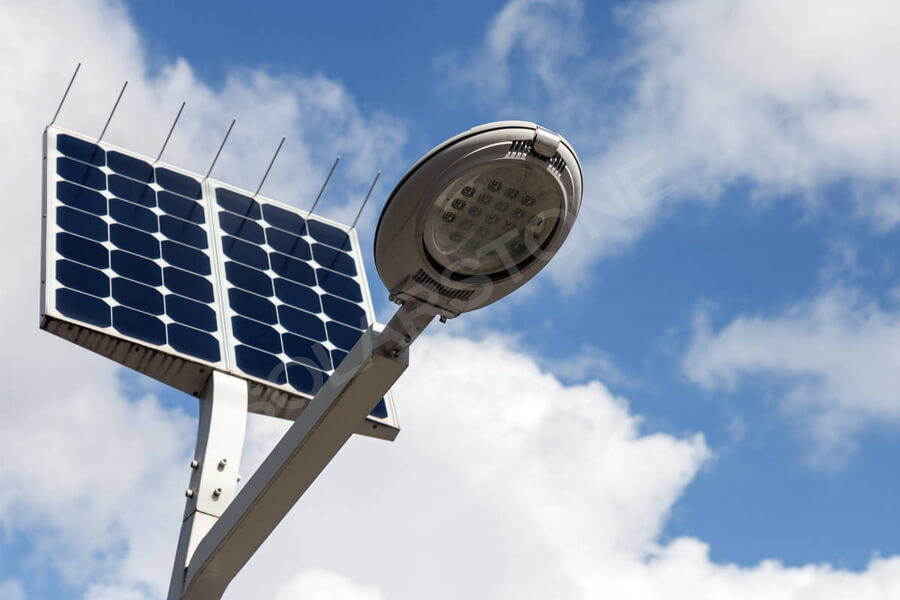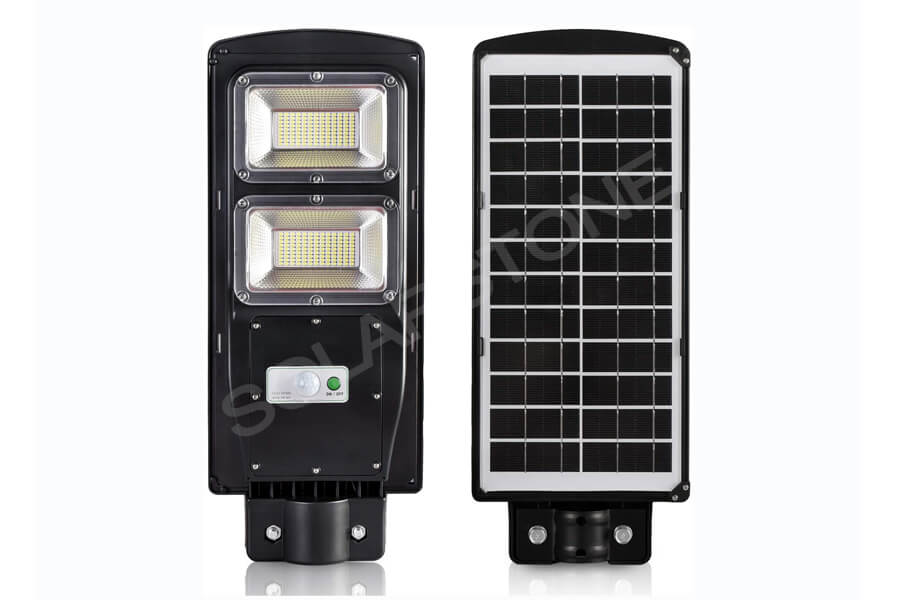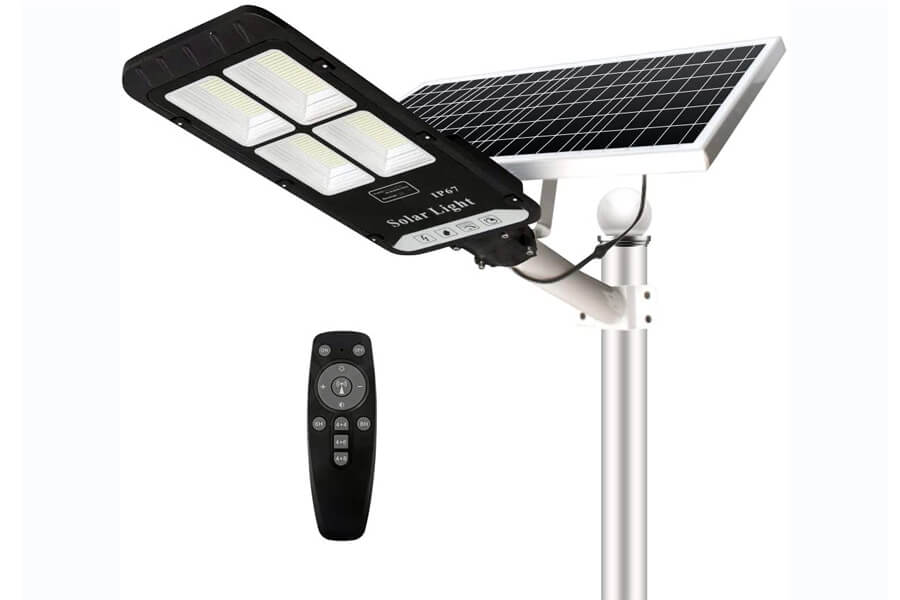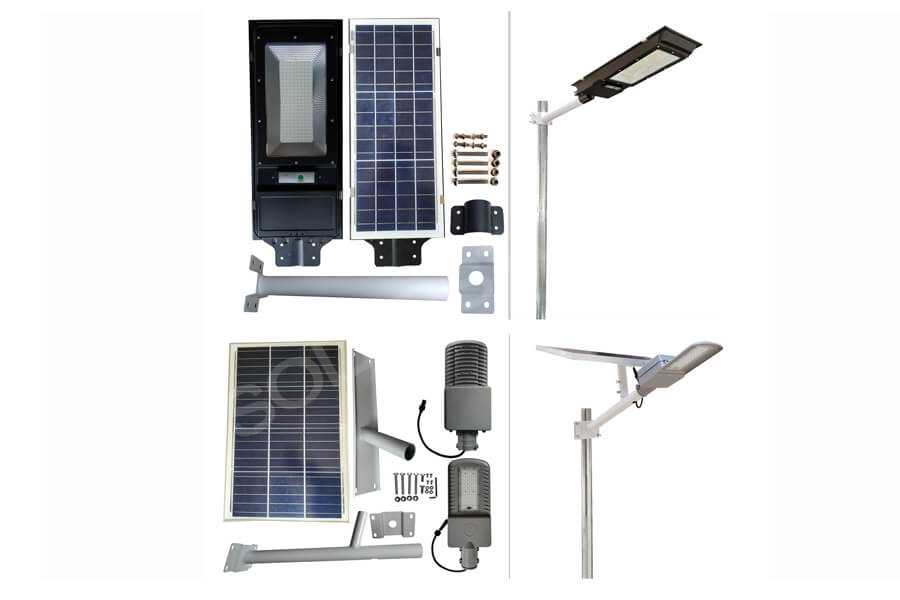Maintenance of solar street lamp battery
1. Prevent rainwater from entering
The outer packaging of the battery must be tight enough to prevent rainwater from entering.
2. Stability of discharge charging
In the process of charging and discharging, the signs of too high and too low voltage shall not appear.
3. Temperature control
Any object has its own proper temperature, which can not be too high or too low. We must control the temperature.
4. Control of charging and discharging
This requires skills. The charging and discharging times of the battery are limited. We need to control the charging and discharging times.
How to prolong the service life of solar street lamp battery?
1. To prevent overcharge
The life and performance of solar street lamp battery are closely related to the heat accumulation inside the battery, and the heat source inside the battery mainly comes from the power loss of internal electrochemical reaction. You can simply look at the product of charging voltage and charging current.
In chemical reaction, the floating charge current will increase and produce more heat. In constant voltage charging, the floating charge current will increase with the increase of temperature, which will further increase the temperature. Thermal runaway is a special phenomenon caused by the structure of valve regulated sealed battery. Thermal runaway often brings serious hazards, such as battery water loss, shell “belly bulge”, etc. in serious cases, the battery will be scrapped.
To prevent overcharge is to provide the charging voltage value in strict accordance with the manufacturer’s instructions. The current combined power supply can be set and intelligent management can be realized. It should be noted that the first thing is to set it correctly, and the second is that unauthorized personnel can not change it at will.
2. To prevent under charging
On the contrary to overcharge, insufficient charging is mainly caused by low or too low charging voltage setting. Or there is a problem with the rack system.
3. Over discharge shall be prevented
The discharge depth is closely related to the designed number of charge discharge cycles (service life) of the battery. For example, when the discharge depth is 5%, the number of cycles is 10000, and when the discharge depth is 50%, the number of cycles is only 800. In case of excessive discharge, the battery can not be activated to the best state, or even scrapped.
The discharge time and termination voltage are different at different discharge rates, and the effective capacity is also different, which is affected by the ambient temperature. Maintenance personnel shall pay attention to it and set it in the monitoring unit in strict accordance with relevant data, and shall not change it arbitrarily.
Now the rack power supply manufacturers have designed the battery power down function, that is, when the solar street lamp battery discharges to the set termination voltage, the battery discharge circuit will be automatically cut off through the monitoring command. In addition, when the manufacturer considers that the monitoring unit cannot detect the battery termination voltage for some reason (depending on its working power supply) or cannot issue a command, a backup forced cut-off circuit is set.
Therefore, maintenance personnel should also pay attention to the reliability of these hardware circuits during patrol inspection, and check and maintain them.
4. Control ambient temperature
When the battery temperature increases, the electrolyte activity intensifies, the internal resistance of the battery decreases, and the floating charge current increases, which leads to the intensification of corrosion of conductive elements and the reduction of service life; On the contrary, the electrolyte activity decreases, the internal resistance of the battery increases, and the discharge capacity of the battery to the load decreases. Therefore, it is very necessary to monitor the temperature of solar street lamp cells and control and maintain the ambient temperature.
At the same time, the charging voltage must be temperature compensated to avoid overcharge at high temperature and undercharge at low temperature. In most places where VRLA battery packs are used, the ambient temperature is controlled at about 25 degrees. The accelerated life test shows that the service life of solar street lamp cells will be shortened by half if the ambient temperature is increased by 10 degrees without adjusting the charging voltage.
5. Replace the faulty battery in time
Due to the process difference of each monomer, it may gradually “fall behind” under long-term floating charge. Therefore, the monitoring unit will have the management function of regularly equalizing the battery pack, in order to activate this backward monomer and make it no longer fall behind. But it often lags behind and may eventually become a faulty battery.
We can use a variety of methods to determine whether it is terminally ill, such as capacity test alone or on-line test of its internal resistance value. The key is to replace the faulty battery in time, which is very important to the availability and even the service life of the solar street lamp battery pack.
6. It is recommended to conduct capacity test and discharge test of battery pack regularly.
The capacity test is for the physical examination of the battery pack. Of course, the workload is large, but considering the needs and possibilities, it is recommended to carry out sampling test when conditions permit.







